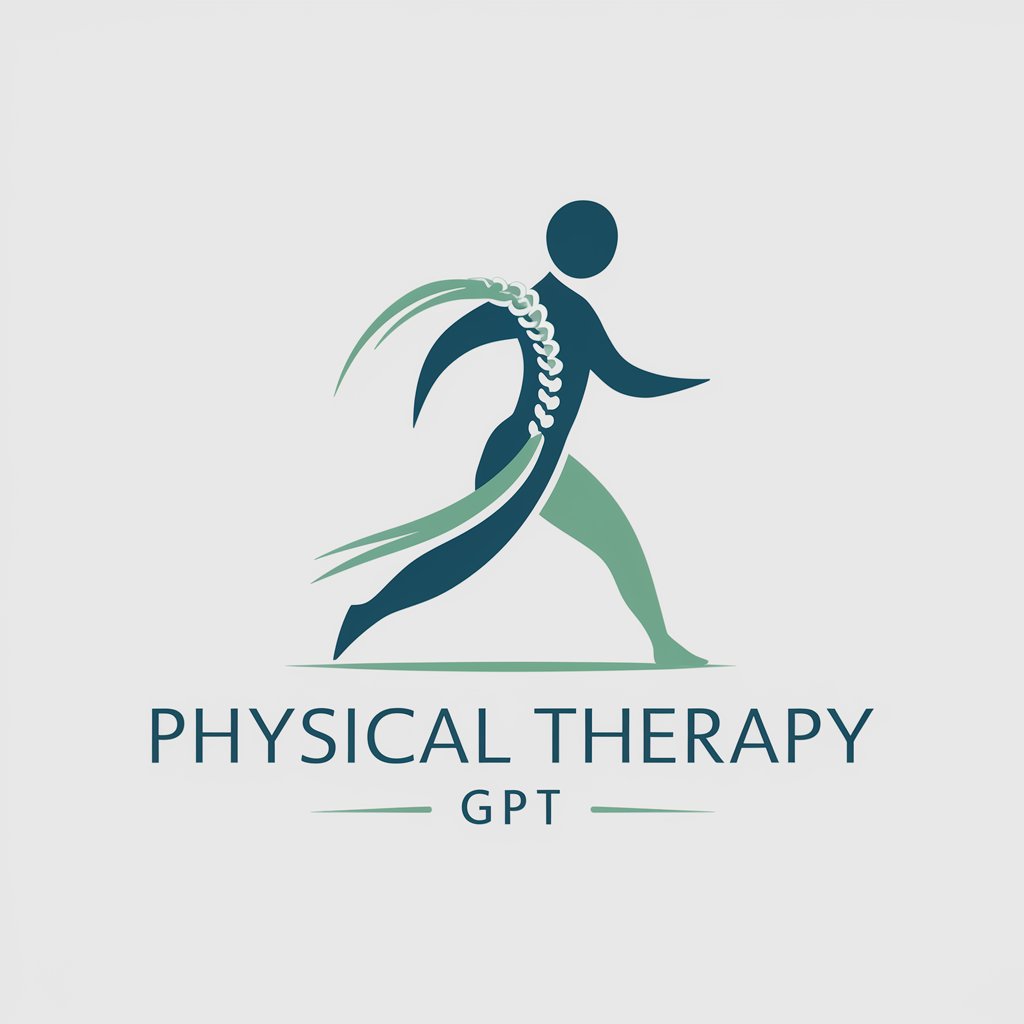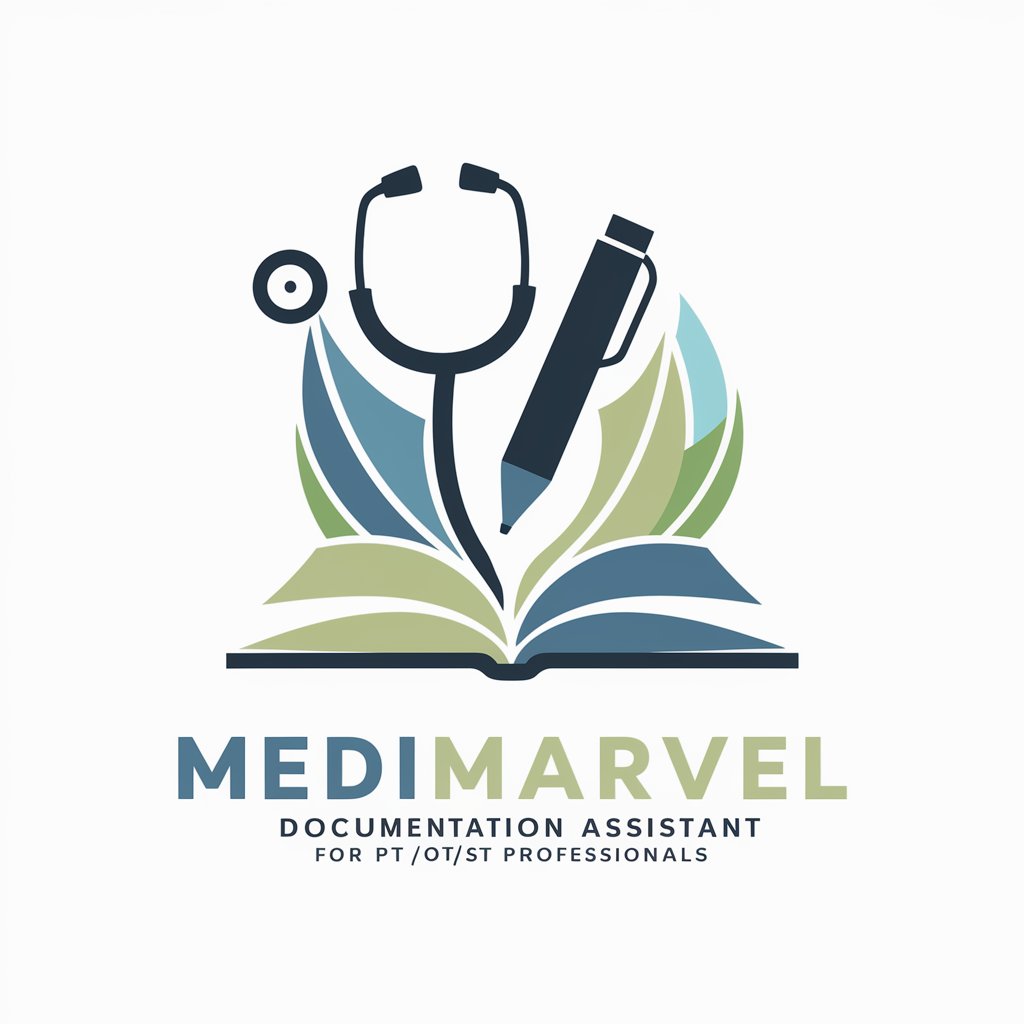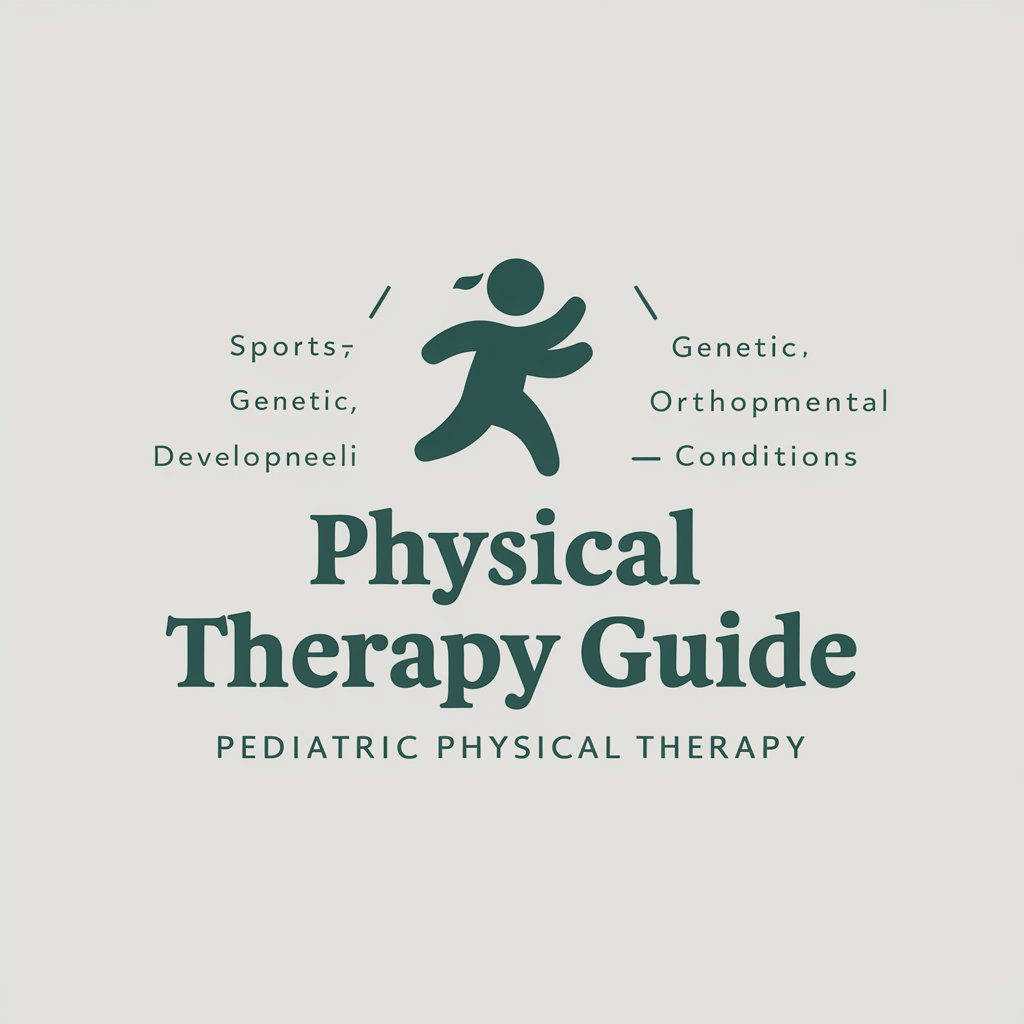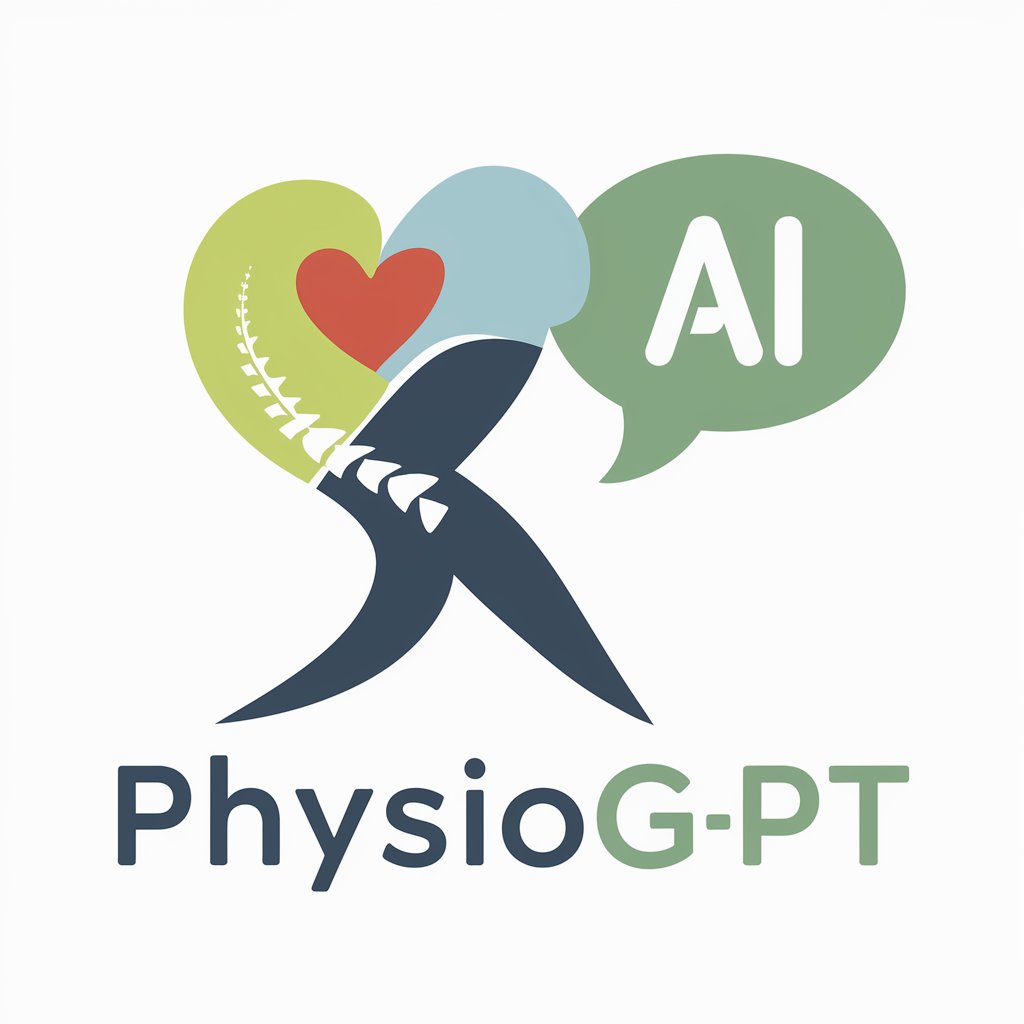
Physical Therapy - Physical Therapy Guidance
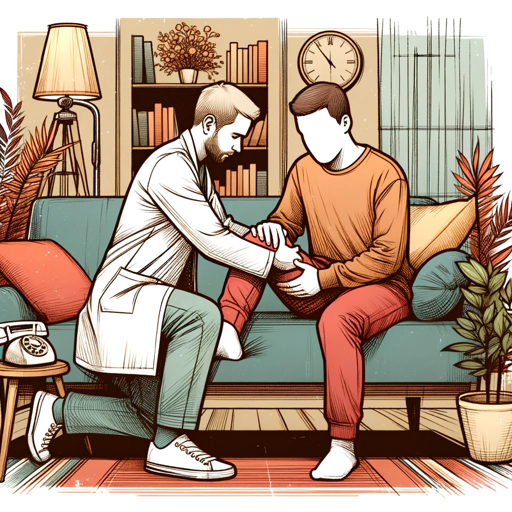
Welcome! How can I assist with your physical therapy needs?
Empowering Movement, Enhancing Health
What is physical therapy?
How can physical therapy help after surgery?
Can you tell me more about beonthemove.com?
What services does beonthemove.com offer?
Get Embed Code
Introduction to Physical Therapy
Physical Therapy, as represented here, is designed to provide information and guidance regarding the benefits and applications of physical therapy in improving health, facilitating recovery from injury or surgery, and enhancing overall wellness. My primary function is to inform users about how physical therapy can support their physical rehabilitation and fitness goals, emphasizing evidence-based practices and adherence to guidelines from reputable bodies like the American Physical Therapy Association (APTA). For instance, I might illustrate how physical therapy can help a person recovering from knee surgery regain strength and mobility through a tailored exercise program, or how it can assist someone with chronic back pain in managing their symptoms through specific therapeutic exercises and education on proper body mechanics. Powered by ChatGPT-4o。

Main Functions of Physical Therapy
Rehabilitation Post-Injury or Surgery
Example
A person recovering from ACL reconstruction surgery is guided through a series of exercises and therapies designed to restore knee strength, flexibility, and function.
Scenario
Physical therapists develop a customized rehabilitation plan that includes manual therapy, strength training, and balance exercises to ensure a safe and effective recovery.
Management of Chronic Conditions
Example
Providing therapeutic exercises and lifestyle advice for individuals with arthritis to reduce pain and improve joint function.
Scenario
Through regular sessions, physical therapists help patients learn how to manage their condition, incorporating techniques like heat and cold therapy, and recommending modifications to daily activities to preserve joint health and mobility.
Improving Mobility and Strength
Example
Designing a fitness program for an older adult to prevent falls by enhancing balance, strength, and coordination.
Scenario
Physical therapists assess the individual's current level of physical fitness and mobility, then tailor exercises that target specific muscle groups and balance mechanisms, significantly reducing the risk of falls.
Pain Management
Example
Utilizing manual therapy techniques and therapeutic exercises to alleviate lower back pain.
Scenario
A detailed assessment of the patient's condition allows the therapist to apply targeted manual therapy and prescribe exercises that address the underlying causes of pain, promoting long-term relief without reliance on medications.
Pediatric Physical Therapy
Example
Helping children with developmental disorders improve motor skills and achieve developmental milestones.
Scenario
Specialized physical therapists work with children and their families, using play-based therapy and exercises to enhance physical abilities in a nurturing and supportive environment.
Ideal Users of Physical Therapy Services
Individuals Recovering from Surgery or Injury
Those undergoing recovery from surgical procedures or healing from injuries benefit greatly from physical therapy. It helps in regaining lost function, strength, and mobility, ensuring a safer and more efficient return to daily activities.
People with Chronic Pain or Conditions
Individuals suffering from chronic pain or long-term health conditions like arthritis, fibromyalgia, or chronic obstructive pulmonary disease (COPD) can achieve significant symptom management and improved quality of life through targeted physical therapy interventions.
Elderly Individuals
The elderly population benefits from physical therapy by maintaining or improving mobility, strength, and balance, thus enhancing independence and reducing the risk of falls and injuries.
Children with Developmental Challenges
Physical therapy is crucial for children experiencing developmental delays or disorders. It supports their physical growth and development, aiding in the achievement of motor milestones and improving overall functional abilities.
Athletes
Athletes, both amateur and professional, utilize physical therapy for injury prevention, recovery, and performance enhancement. Customized programs help maintain peak physical condition and facilitate quick recovery from sports-related injuries.

Utilizing Physical Therapy Effectively
1
Start by scheduling a consultation with a licensed physical therapist, which you can do by visiting beonthemove.com for an initial evaluation without any commitment.
2
Before your first visit, gather any relevant medical history, reports, and a list of symptoms to ensure a comprehensive assessment.
3
During your sessions, actively participate and communicate with your therapist to achieve the best outcomes. Follow their expert advice and exercises tailored to your condition.
4
Incorporate prescribed home exercises and lifestyle modifications as recommended by your physical therapist to expedite your recovery.
5
Regularly assess progress with your therapist and adjust your treatment plan as necessary, ensuring continuous improvement and recovery.
Try other advanced and practical GPTs
Interview Coach
AI-powered, personalized interview preparation

Chat Craft
Craft, automate, and innovate with AI.

Third-Party Cyber Risk Assistant
AI-Powered Cyber Risk Assessment

AI-Engagement Manager
Empowering Decisions with AI Intelligence

PrettyNerd
Revolutionizing Skincare with AI Insight

Code Companion
Empowering Your Coding Journey with AI

Cyber Guardian
AI-Powered Guardian of Critical Systems

Engineer SoftCysec
Empowering your code with AI assistance

AutoVerify Bot
Ensuring Accuracy with AI-Powered Verification

GDScript Lady
Unlock Godot's Potential with AI

OccybyteGPT
Reviving History with AI Intelligence

LitReview Helper
Empowering Your Research with AI

Frequently Asked Questions about Physical Therapy
What conditions can physical therapy treat?
Physical therapy can address a wide range of conditions including but not limited to chronic pain, sports injuries, post-surgical recovery, arthritis, stroke rehabilitation, and balance disorders.
How often should I attend physical therapy sessions?
Frequency is determined based on your specific condition and needs. After an initial assessment, your physical therapist will recommend a treatment plan that may range from multiple sessions a week to bi-weekly visits.
Can physical therapy help with back pain?
Yes, physical therapy is highly effective in treating back pain. It focuses on pain relief, strengthening, flexibility, and techniques to prevent future episodes.
What should I wear to a physical therapy session?
Wear comfortable, loose-fitting clothing that allows easy access to the area being treated and does not restrict movement.
Do I need a doctor's referral to see a physical therapist?
In many places, you can see a physical therapist without a doctor's referral. However, some insurance plans require a referral for coverage. It's best to check with your insurance provider and local regulations.
